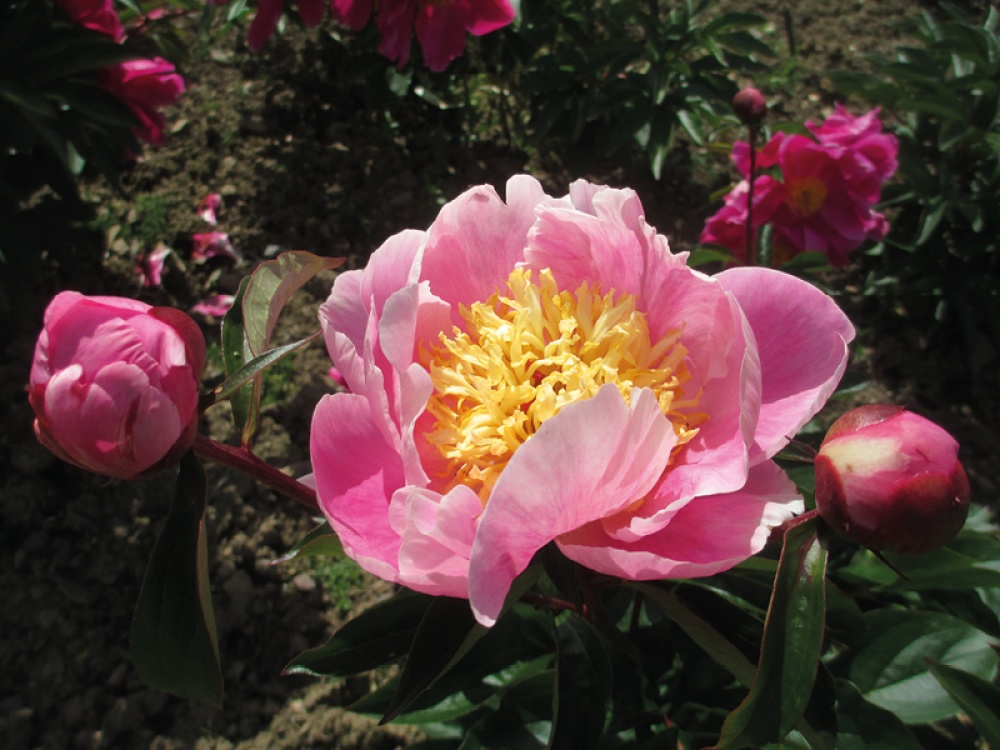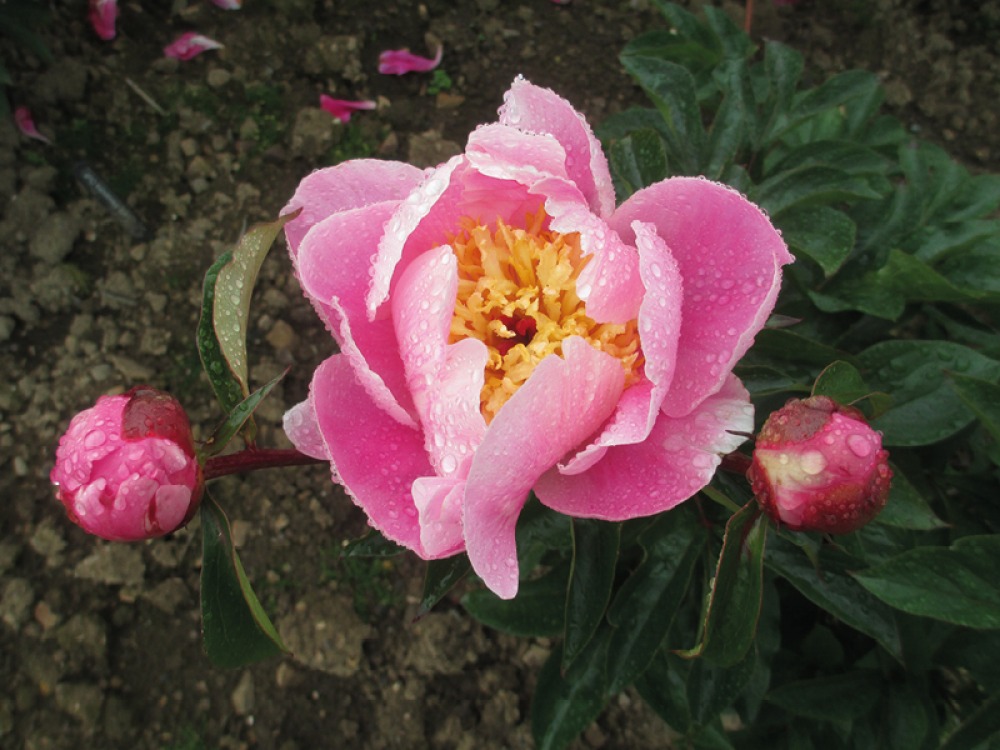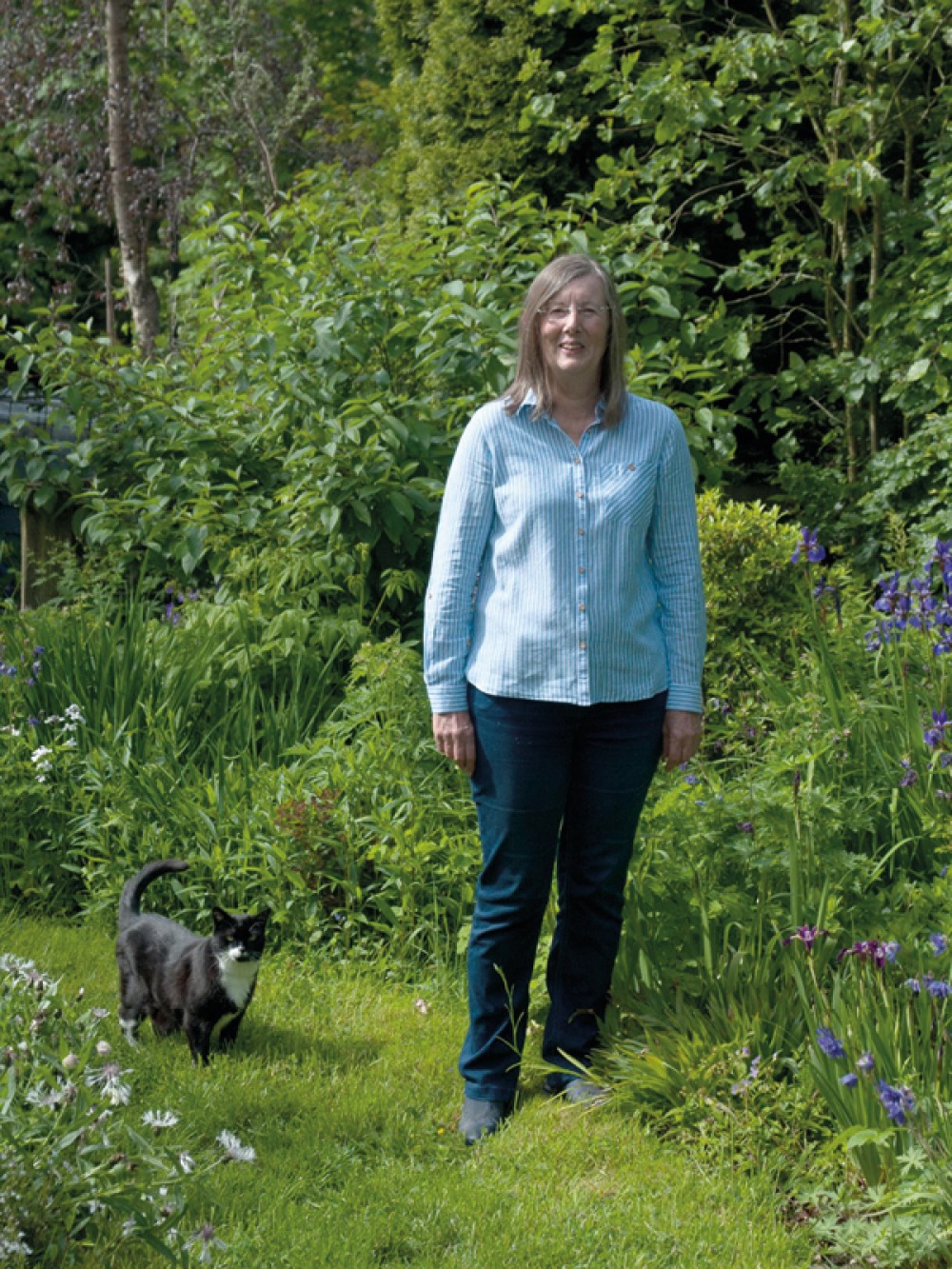County Durham Gardener's Flower Gets Crowned Winner of the Threatened Plant of the Year Competition

It’s not every day that a flower in a County Durham garden gets crowned winner of the Threatened Plant of the Year competition, but for amateur gardener Roz Cooper and her pink peony that is exactly what happened. We caught up with Roz to find out more
‘I was so surprised when I won because the other plants that were entered all had such interesting stories and mine wasn’t exceptional in that sense. I’ve had it around 25 years – I know because I’ve got a catalogue where it’s marked – but I had no idea how special it was. In the 90s people were heavily promoting ‘Bowl of Beauty’ which is a similar style of peony, but I didn’t want that one because everyone had it. I wanted something slightly different so I chose Gleam of Light instead because I liked the look of it, but obviously I had no idea it would become as rare as it apparently is.’
Speaking about the peony’s triumph, Gill Groombridge of Plant Heritage (the horticultural conservation charity which organised the competition) says: ‘The judges thought this peony was great because it’s a plant that has a good perfume, it’s very attractive with a deep pink colour and beautiful yellow on the inside. It’s free flowering so quite distinctive and it is also a plant that would be useful for breeding. It originally had a connection with Kelways nursery, which is one of the best known historic plant nurseries so it also has a good provenance.
‘Our judges look at all the entries very carefully and generally consider if the plants are garden-worthy; do they deserve to be highlighted for people to purchase; and should they be brought back into commerce so they’re not threatened anymore,’ explains Gill.

The Threatened Plant of the Year competition was started three years ago to highlight the fact that there are unusual plants out there which need to be looked after and conserved. The competition was started by Plant Heritage and their aim is to conserve and safeguard the UK’s horticultural heritage and diversity of garden plants by keeping living examples of rare plants in the National Plant Collections scheme.
‘Over decades, a rich diversity of plants have been bred, however, when production of garden plants is commercially streamlined we risk losing some of those precious cultivars,’ Gill explains.
‘With a smaller variety of plants on sale in the main commercial nurseries, the genetic heritage of our plants can only be preserved by active gardeners. It is through the National Plant Collection scheme that we conserve the diversity of those plants.’
Currently the collections contain around 95,000 plants, held across 650 collections, representing a huge resource for gardeners, nurserymen, garden designers, researchers, plant breeders and those interested in historical gardens and landscapes. Having these plants as part of a registered and documented conservation scheme ensures that they will be a resource for generations to come.
‘The National Plant Collection is like a living library. We collect the popular plants, the not-so-popular plants, the good looking plants, the not-so-good-looking plants, the difficult to grow plants, the difficult to propagate plants, and then we keep them all in cultivation so they’re like a reference library for people to access and learn about,’ adds Gill.

Read More: The Plant Workshop Owners on Making a Difference with House Plants
While starting a National Plant Collection is a long, formal process, with collection holders spending many years working with their chosen group of plants to become experts in their field, there is also a simpler opportunity to get involved with the work of the Plant Heritage, which is by becoming a Plant Guardian. This scheme is for people who have just one or two rare specimens in their garden and want to make sure they are formally recorded and propagated to ensure survival. This is what Roz chose to do.
‘I became a Plant Guardian in 2015, a year after the scheme started,’ she says. ‘It seemed like such a good idea to actually register if you had something rare because plants get lost so easily and it highlights ones we need to think about a bit more carefully and give a bit more TLC than the others.
‘I started off with just one or two, but have slowly realised that more of the plants I grow are rarer than I initially thought. Over the years I’ve kept adding to the list and I’ve got about 22 at the moment. There are a couple more that I should be registering which I just haven’t got round to yet, but I will do so this year.’
Within their role, Plant Guardians must not only preserve their plants, they must also try to propagate them so that they can be shared with other gardeners and made less rare. By putting your propagated plants into Plant Heritage’s annual exchange you help to get that plant spread around the country.
At the time of the competition, Roz’s garden was the only known location of that type of Paeonia to Plant Heritage, however thanks to Roz the future of this peony is looking brighter. ‘I am working with Caroline Stone, another member of Plant Heritage, and I have been able to provide her with plant material to start a National Plant Collection of historic peonies in Cornwall,’ Roz says. ‘We can’t get much further apart if we tried but it’s really important to do it in order to help rebuild the numbers of this iconic plant and keep it safe for the future.’
Read More: How You Can Make a Habitat For Wildlife in Your Garden and the Importance of Teaching Children About Nature
Peonies are long lived plants, and ‘Gleam of Light’ was available to buy for more than 60 years before it fell out of nursery catalogues, so Roz couldn’t believe there weren’t more plants out there – and to everyone’s delight it seems she may be right.
Gill explains: ‘As a result of the publicity of the competition we have had people come forward who think they might have this peony in their garden too, which is wonderful news. We’re hoping that one or two have definitely got this specific plant, but it’s still being confirmed because obviously many gardens and gardeners don’t have formal records.’
Roz is proud of what she and Plant Heritage have been able to do for this rare peony. ‘It would be great to discover more examples of it in the future,’ she says. ‘I hope it gets to the point where I wouldn’t be able to enter it in the Threatened Plant competition because there are so many more Gleam of Light peonies out there. That would be absolutely fantastic.’







